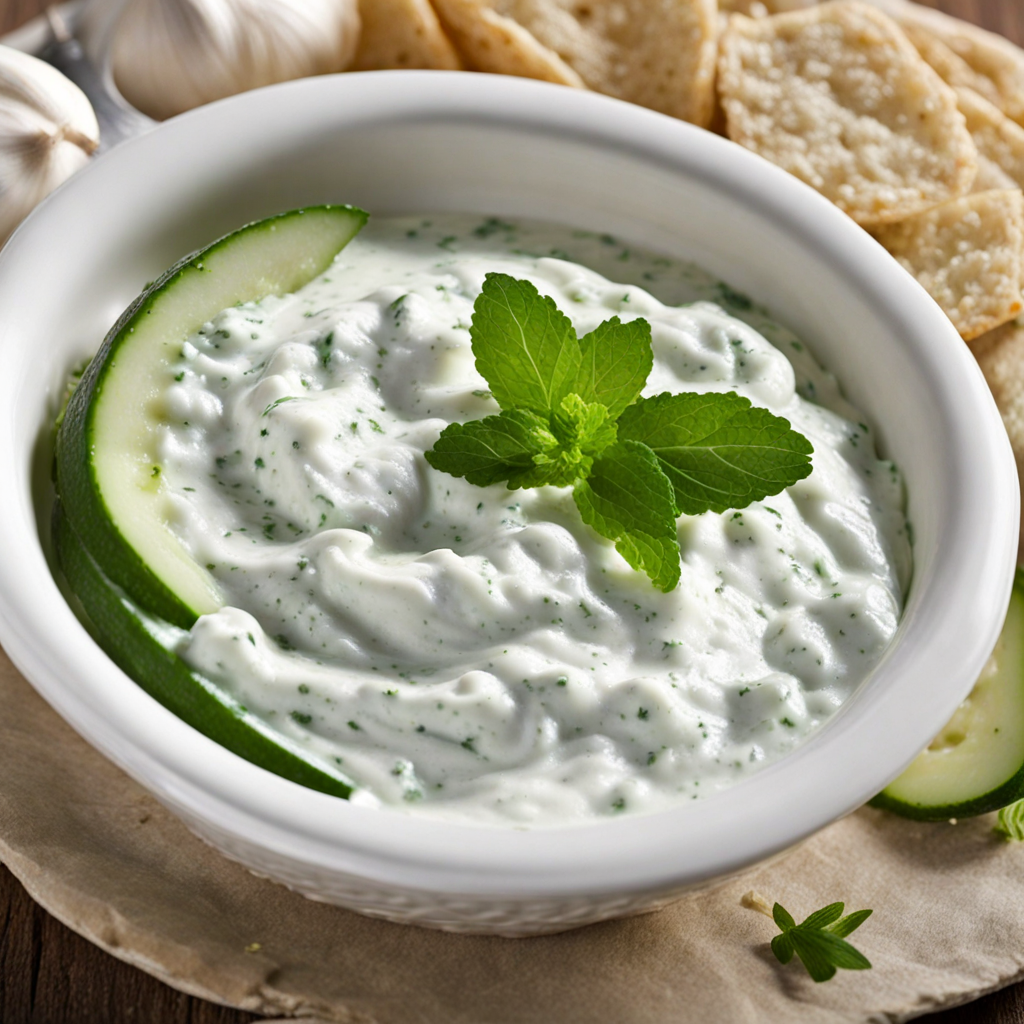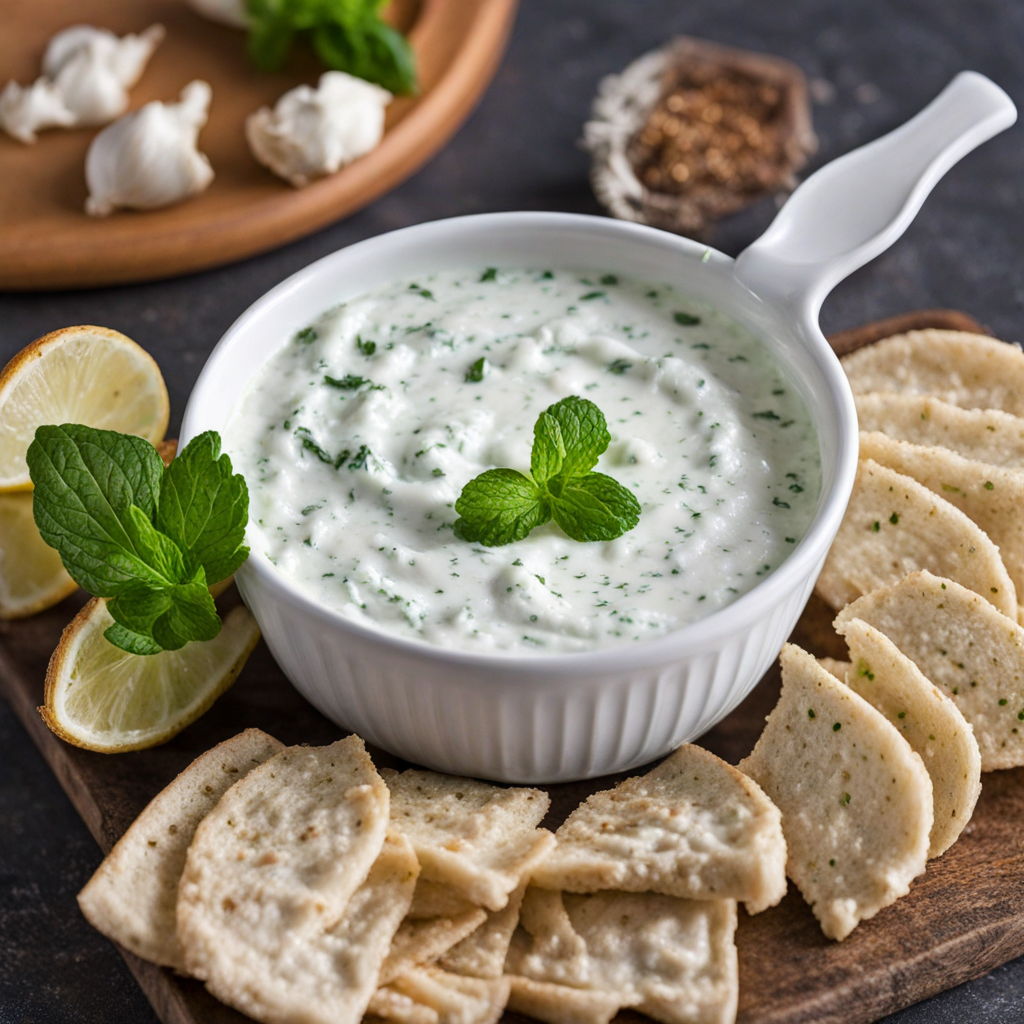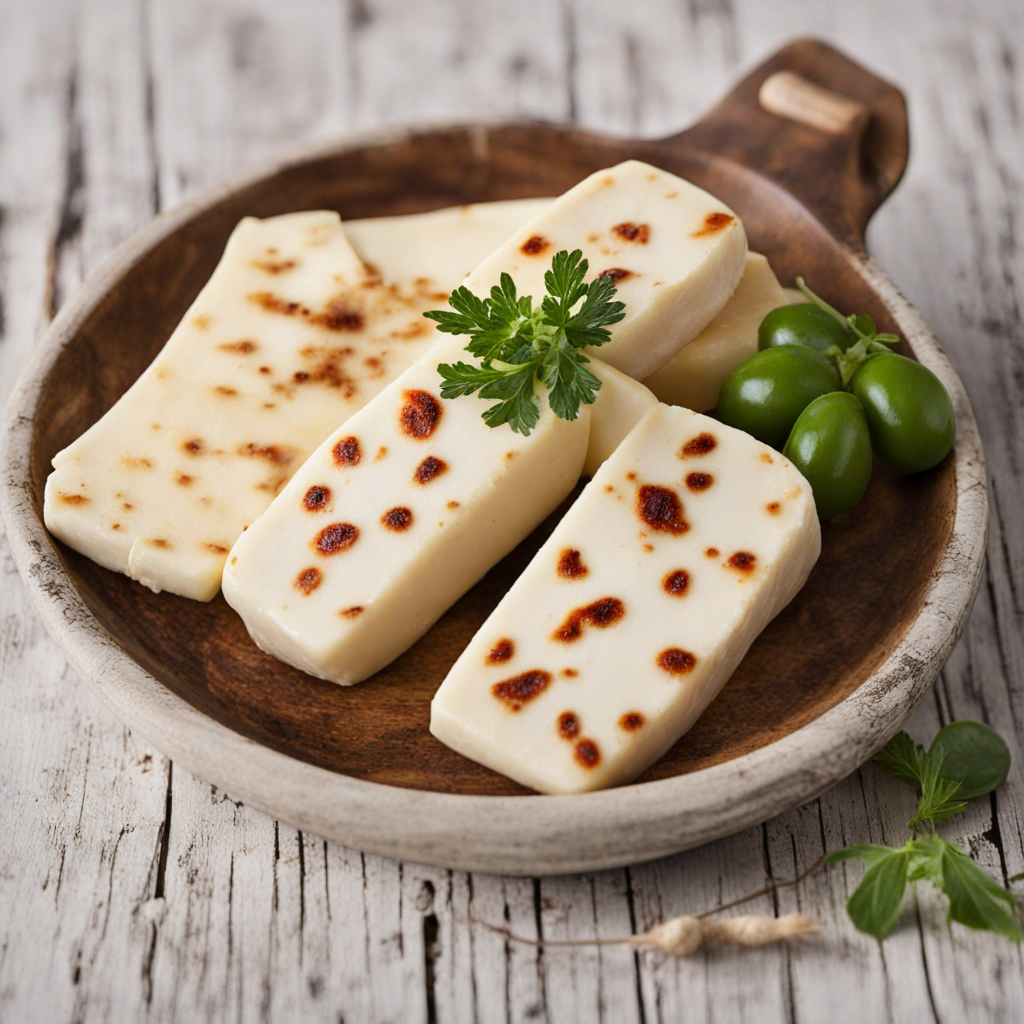Tzatziki
Tzatziki is a refreshing and creamy dip that originates from the Mediterranean region, particularly popular in Cyprus and other neighboring countries. It is primarily made from strained yogurt, which provides a rich and velvety texture. The yogurt is typically blended with finely grated cucumbers, which add a delightful crunch and a subtle sweetness. This combination creates a light yet satisfying dish that is perfect for warm weather and complements a variety of foods. To elevate its flavor, tzatziki is infused with a medley of aromatic ingredients. Fresh garlic, usually minced or crushed, adds a pungent kick that balances the coolness of the yogurt and cucumbers. A drizzle of olive oil contributes a fruity richness, while a splash of vinegar or lemon juice introduces a tangy brightness that ties all the flavors together. Fresh herbs, particularly dill or mint, are often sprinkled in, offering an herbal note that enhances the overall taste experience. Tzatziki is incredibly versatile and can be enjoyed in numerous ways. It is commonly served as a dip with warm pita bread or fresh vegetables, making it a perfect appetizer for gatherings. Additionally, it pairs wonderfully with grilled meats, such as lamb or chicken, acting as a cooling contrast to the spices often found in these dishes. Whether as a condiment or a standalone dip, tzatziki provides a delightful explosion of flavors that is sure to excite your taste buds and transport you to the sunny shores of Cyprus.
How It Became This Dish
The History of Τζατζίκι: A Culinary Delight from Cyprus Introduction Τζατζίκι, a refreshing and aromatic dip made primarily from yogurt, garlic, cucumber, and olive oil, is a staple in Cypriot cuisine and across the Mediterranean region. Known for its cooling properties, this dish has become synonymous with the flavors of Cyprus, but its roots dig deep into a complex history intertwined with various cultures. To understand the significance of Τζατζίκι, one must explore its origins, cultural relevance, and how it has evolved through the ages. Origins The story of Τζατζίκι can be traced back to ancient times, with its origins often linked to the broader region of the Eastern Mediterranean. The use of yogurt as a food staple dates back to ancient civilizations such as the Greeks, Persians, and Turks. Records suggest that yogurt was consumed by nomadic tribes in central Asia as early as 3000 B.C., and it gradually made its way to the Mediterranean through trade and cultural exchanges. In Cyprus, the dish reflects the island's diverse influences, stemming from its long history of conquest and trade. The island has been occupied by various civilizations, including the Greeks, Romans, Byzantines, and Ottomans, each leaving a mark on its culinary landscape. The Greeks are particularly significant in the history of Τζατζίκι, as they contributed to the popularization of yogurt-based dishes in the Mediterranean. Cultural Significance Τζατζίκι has become more than just a dish; it symbolizes hospitality and the sharing of food in Cypriot culture. Traditionally served as a meze, which is a selection of small dishes served with drinks, Τζατζίκι plays a pivotal role in social gatherings and celebrations. It is often enjoyed with grilled meats, pita bread, or fresh vegetables, making it a versatile accompaniment that enhances the dining experience. The dish also has a strong association with the Mediterranean lifestyle, which emphasizes the importance of fresh, local ingredients and communal dining. The use of olive oil, garlic, and cucumber not only reflects the agricultural bounty of the region but also embodies the principles of healthy eating that are prevalent in Mediterranean diets. The cooling properties of Τζατζίκι make it particularly popular during the hot Cypriot summers, providing relief alongside the rich flavors of grilled meats. Development Over Time As Cyprus navigated through its tumultuous history, the preparation and consumption of Τζατζίκι evolved. The arrival of the Ottomans in the 16th century introduced new culinary techniques and ingredients that further enriched the dish. The Ottomans had their own version of yogurt-based dips, such as "cacık," which shares similarities with Τζατζίκι. This cross-pollination resulted in variations of the dish, with different regions adapting the recipe to suit local tastes and available ingredients. In contemporary Cyprus, Τζατζίκι remains a beloved dish, enjoyed by locals and tourists alike. It has seen a resurgence in popularity in recent years, as the global trend towards healthier eating and the Mediterranean diet has brought traditional dishes into the limelight. Many Cypriots take pride in their family recipes, often passed down through generations, emphasizing the personal connection to their culinary heritage. Ingredients and Preparation The classic recipe for Τζατζίκι includes strained yogurt, finely grated cucumber, minced garlic, olive oil, vinegar or lemon juice, and fresh herbs like dill or mint. The quality of the ingredients is crucial; authentic Cypriot Τζατζίκι is made with thick, creamy yogurt, preferably from sheep or goat's milk, which adds a distinctive tanginess and richness. Preparation involves draining the cucumber to remove excess moisture, which prevents the dip from becoming watery. The combination of yogurt and cucumber creates a delightful contrast between the creaminess of the yogurt and the crunch of the cucumber, while garlic adds a pungent kick that elevates the flavor profile. The addition of olive oil not only enhances the taste but also reflects the importance of this staple ingredient in Cypriot cooking. Regional Variations While Τζατζίκι is widely recognized throughout Cyprus, various regions have developed their own interpretations of the dish. In some coastal areas, fresh herbs like coriander or parsley may be incorporated, lending a unique twist to the traditional recipe. In the mountainous regions, where the climate is cooler, some families may add a touch of chili powder for an unexpected heat. Moreover, as Cypriots have migrated worldwide, they have carried their culinary traditions with them, leading to the emergence of Τζατζίκι in international cuisine. In countries such as Australia, the UK, and the United States, the dish has found a place on menus, often adapted to cater to local palates while retaining its core essence. Modern Popularity and Global Influence Today, Τζατζίκι is not only a beloved dish in Cyprus but has also gained international acclaim. It is frequently featured in Mediterranean-themed restaurants and is often served as an appetizer or a dip at social gatherings. Its versatility allows it to be paired with various dishes, such as grilled meats, falafel, and even as a spread in sandwiches. The global interest in Mediterranean cuisine, driven by health-conscious consumers seeking nutritious and flavorful options, has further propelled the popularity of Τζατζίκι. It stands as a testament to the island's rich culinary heritage and the enduring appeal of traditional foods that bring people together. Conclusion Τζατζίκι, with its rich history and cultural significance, serves as a delicious reminder of Cyprus's diverse culinary influences. From its ancient roots to its modern-day popularity, this delectable dip continues to capture the hearts and taste buds of those who encounter it. As it evolves and adapts to contemporary tastes, Τζατζίκι remains a cherished part of Cypriot identity, embodying the spirit of hospitality and the celebration of life's simple pleasures. Whether enjoyed at a family gathering, a festive celebration, or as a quick snack, Τζατζίκι is a dish that transcends time and space, inviting everyone to partake in its refreshing embrace.
You may like
Discover local flavors from Cyprus







